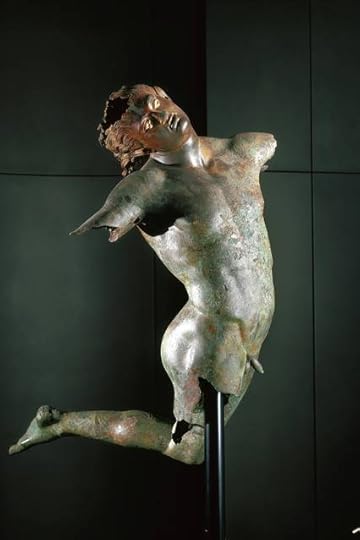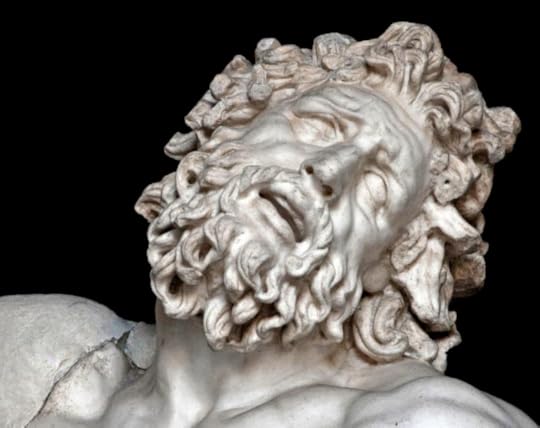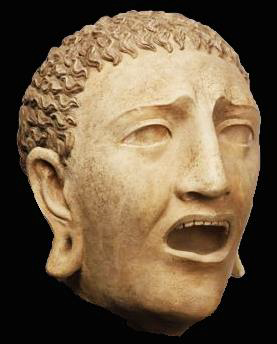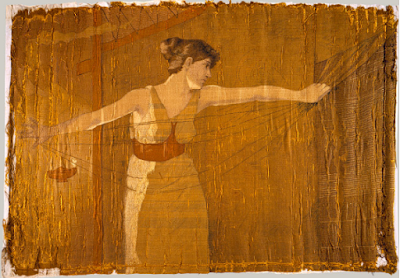Power and Pathos: Bronze Sculpture of the Hellenistic World
Power and Pathos: Bronze Sculpture of the Hellenistic WorldJ. Paul Getty Museum

 Fig. 1. Laocoon from the Hellenistic Laocoon Group. Image courtesy of Prof. Osmund Bopearachchi
Fig. 1. Laocoon from the Hellenistic Laocoon Group. Image courtesy of Prof. Osmund Bopearachchi
 Fig. 2. Agonized monk, Vardak, Ghandhara. Image courtesy of Prof. Osmund Bopearachchi
Fig. 2. Agonized monk, Vardak, Ghandhara. Image courtesy of Prof. Osmund Bopearachchi Fig. 3. Pain-stricken layman, V&A Museum. Image courtesy of Prof. Osmund Bopearachchi
Fig. 3. Pain-stricken layman, V&A Museum. Image courtesy of Prof. Osmund Bopearachchi
Fig. 4. Lamenting arahat, Mogao cave No.158. Image courtesy of Prof. Osmund Bopearachchi
[image error]
Fig. 5. Bronze Hellenistic statuette of a veiled and masked dancer (3rd–2nd century B.C.), MET Museum nr. 1972.118.95
The complex motion of this dancer is conveyed exclusively through the interaction of the body with several layers of dress. Over an undergarment that falls in deep folds and trails heavily, the figure wears a lightweight mantle, drawn tautly over her head and body by the pressure applied to it by her right arm, left hand, and right leg. Its substance is conveyed by the alternation of the tubular folds pushing through from below and the freely curling softness of the fringe. The woman's face is covered by the sheerest of veils, discernible at its edge below her hairline and at the cutouts for the eyes. Her extended right foot shows a laced slipper. This dancer has been convincingly identified as one of the professional entertainers, a combination of mime and dancer, for which the cosmopolitan city of Alexandria was famous in antiquity.https://www.buddhistdoor.net/features...

Η Πηνελόπη χαλάει το υφαντό της τη νύχτα. Penelope Unraveling Her Work at Night, Dora Wheeler 1886
Wong, S., and W. Yu. Buddhist Iconography Along the Silk Road with Prof. Osmund Bopearachchi, Part Two – The Land Route
Published on November 04, 2019 08:27
No comments have been added yet.



